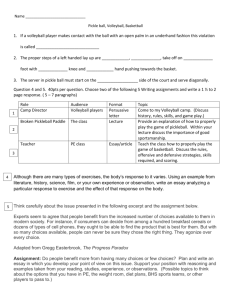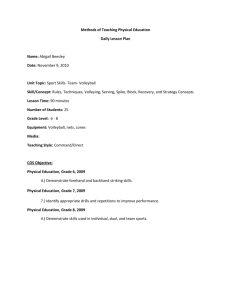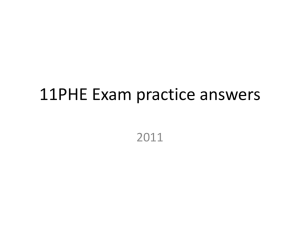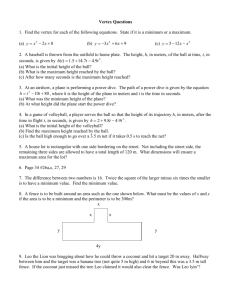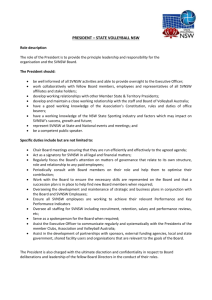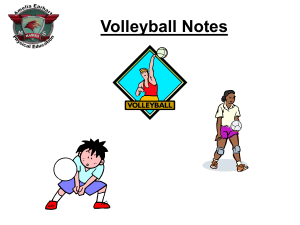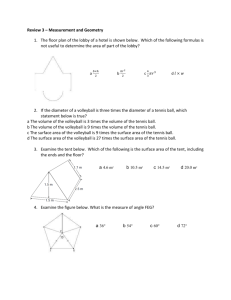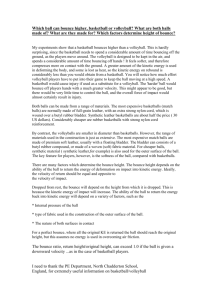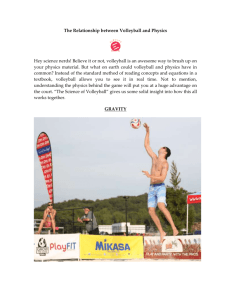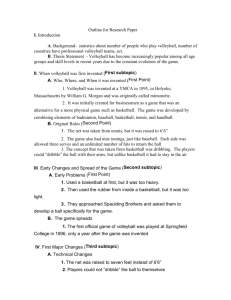Volleyball Unit - Westside Global Awareness Magnet
advertisement
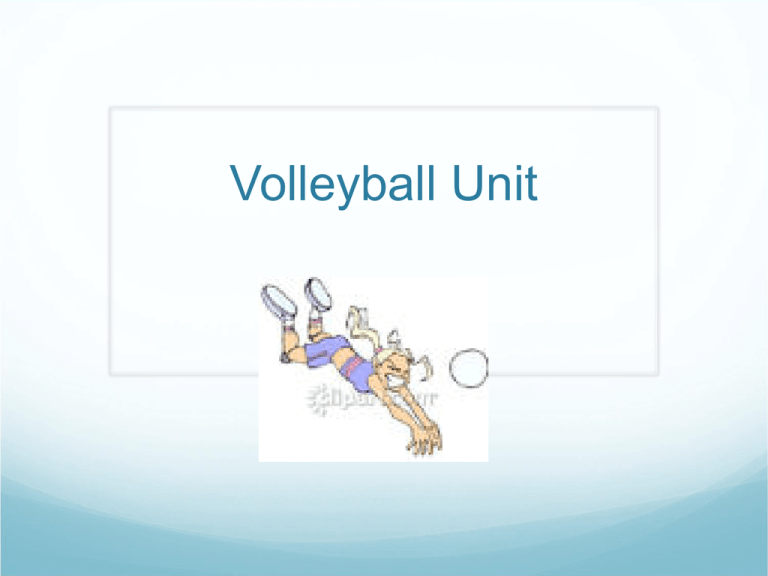
Volleyball Unit Volleyball Unit Standards to be Met 1.3- Strike an object consistently with a body part toward an intended target 2.6- Explain the role of the shoulders, legs and forearm in the forearm pass 1.1- Demonstrate mature technique of volleying 5.1- Accept the outcome of the game Volleyball Terms Bump- Passing a ball to your teammate using a forearm pass (arms together) Set- using an overhead pass to move the ball to partner Spike- the “dunk” of volleyball, an overhand hit to send the ball over the net. Dig- diving to knock the ball back to your partner Serve- how the game starts. Back right player is the server, must be behind the “end line” or out of bounce. Team gets to serve until the loose the point Vball terms continued Block- blocking a shot at the net Lift- an illegal hit, when the player grips the ball to get it back in the air Rally- hitting the ball back and forth over the net Rally scoring- when a point is scored on every serve by either the serving team or the returning team Ace- when the serve lands in bounds and scores a point Rotation- after the server looses a point, the team rotates clockwise History of volleyball 1895 William G. Morgan of the YMCA invented the game of volleyball for businessmen who wanted a less physical game to play. 1964 volleyball was introduced to the Olympics 1996 two person beach volleyball was introduced to the Olympics. Rules of the game Every game starts with a serve from behind the out of bounce line. The same person serves the ball until they lose a point. Each team must rotate clockwise so that a new person serves when they get the ball back. Rules continued Only three hits are allowed before the ball must go over the net. Players may not grab the ball with their hand and toss it (called a lift) Players are not allowed to touch the net or step under it during play
